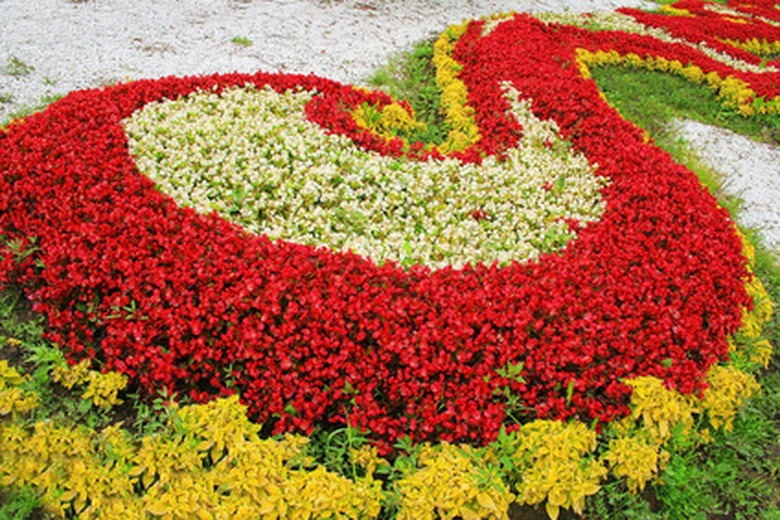Landscape Plan For A Kidney-Shaped Flower Bed
Historically, flowers were planted in kitchen gardens for their medicinal qualities, as edible produce and for their scents, according to Charlie Ryrie, author of "The Country Garden." Those early beds were placed wherever there was a patch of fertile land that received enough sunlight. Shaped beds came into vogue as the grand gardens of Britain and France developed. A kidney-shaped bed with small circular ends and a curved narrow middle shows off a variety of flowers.
Uses
Kidney-shaped flower beds break up a large expanse of lawn in a more interesting way than a circular bed or narrow, rectangular beds. Flower beds planted with tall flowers such as hollyhocks, which grow up to 6 feet, sunflowers, up to 10 feet and cosmos up to 5 feet provide a privacy screen. Set off a patio with kidney-shaped beds on either side of the patio.
- Historically, flowers were planted in kitchen gardens for their medicinal qualities, as edible produce and for their scents, according to Charlie Ryrie, author of "The Country Garden."
- Kidney-shaped flower beds break up a large expanse of lawn in a more interesting way than a circular bed or narrow, rectangular beds.
Plants
Grow a variety of plants in the bed. Tall flowers in the center, such as butterfly bush, won't shade flowers in the middle of the beds. Finish the beds with borders of low-growing flowers, like candytuft, lobelia and sweet alyssum. Another combination is an all-rose bed. Put a trellis in the large end of the kidney and grow a climbing rose up the trellis. Put tea roses around the trellis. Add a contrasting specimen rose, such as a standard, in the small end of the kidney. Complete the bed with a border of miniature roses.
- Grow a variety of plants in the bed.
- Complete the bed with a border of miniature roses.
Edgings
Because kidney-shaped beds are usually in the middle of a lawn, use edging to separate the bed from the lawn. Bricks laid flat to form a mowing edge means you won't have to hand clip around the edge of the bed. Other edging materials include vinyl, pavers and gravel.
Designs
The curving shape of the kidney invites experiments with different colors within the bed. The bed could go from bright pink flowers to lighter pink flowers to very light pink flowers as the planting progress from right to left. Another option is to plant different bands of colors starting at the edge of the bed and going towards the center.
Seasonal
Plan for your beds to have color in every season. Start with spring bulbs, such as tulips, iris and daffodils. When they're finished blooming, daylily bulbs will start to grow and hide the spring bulb's withered leaves. Other summer bulbs include Asiatic and Oriental lilies, agapanthus and amaryllis.
- Because kidney-shaped beds are usually in the middle of a lawn, use edging to separate the bed from the lawn.
- Bricks laid flat to form a mowing edge means you won't have to hand clip around the edge of the bed.
References
- "The Country Garden"; Charlie Ryrie; 2003
- "At Home in the Garden"; Becke Davis; 2001
